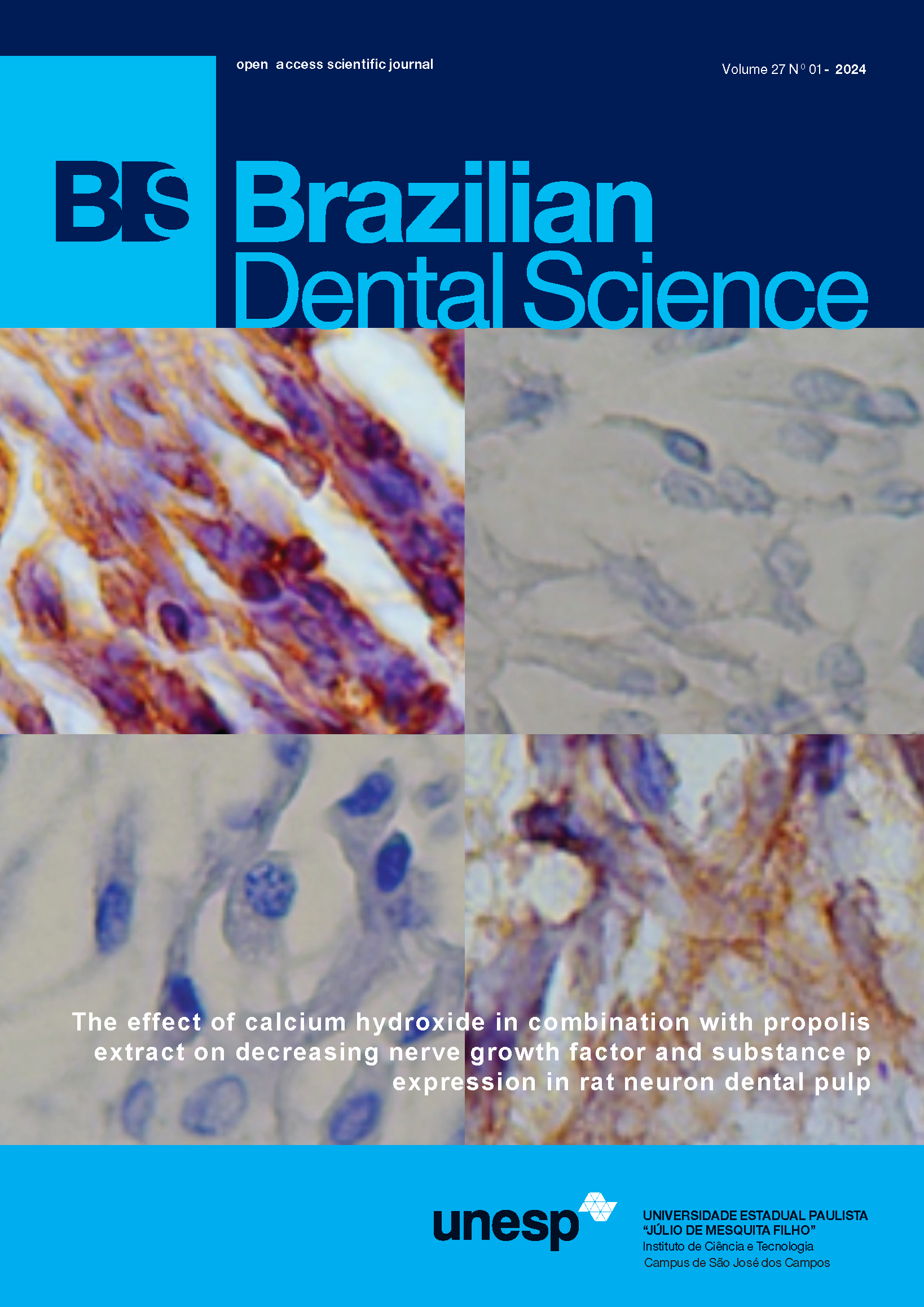Analysis of conventional and digital (digora) radiographic methods for
DOI:
https://doi.org/10.14295/bds.2003.v6i4.528Abstract
The purpose of this study was to test the hypothesis that the digital radiographic method (Digora), when comparedto the conventional radiographic method, allows better identification of the mineralized tissue barrier formed
after pulpotomy in dogs and protection of the remaining pulp with a resorbable membrane of demineralized
bovine cortical bone (Group I) and calcium hydroxide (Group II). Two dogs were used, according to the International
Organization for Standardization, specification #7405:1997: one for a follow-up period of 7 days and
another for the 70–day period. Ten teeth of each dog were submitted to pulpotomy, being 7 for Group I and 3 for
Group II, resulting in sixteen treated roots for each period. Standardized procedures were used to obtain and
analyze the conventional and digital radiographs. Radiographic images suggesting a mineralized barrier were
only distinguished in the roots treated with calcium hydroxide; however, no agreement was achieved between
four experienced observers. Concerning the comparison between the digital and conventional methods, a suggestive
image of a mineralized barrier was observed in four and five roots, respectively, but only one such root
belonged to the follow-up period of 70 days, when a dentin-like bridge was expected. In conclusion, the initial
hypothesis was not confirmed.
Downloads
Published
2010-08-19
Issue
Section
Clinical or Laboratorial Research Manuscript




